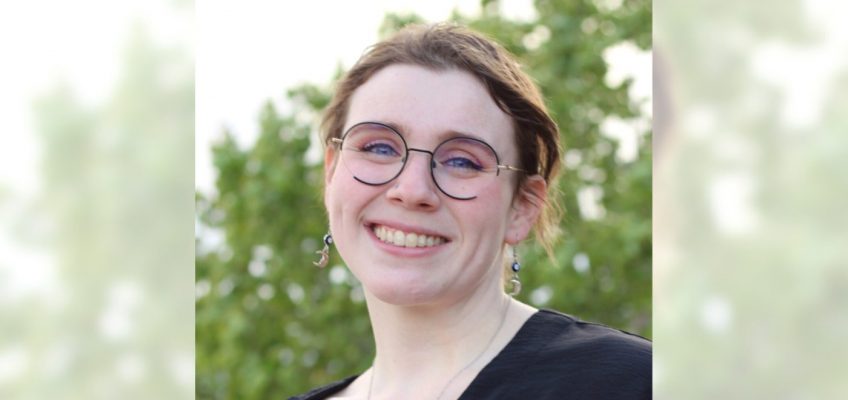By Michelle Andrews, KFF Health News
Quinn Cochran-Zipp went to the emergency room three times with severe abdominal pain before doctors figured out she had early-stage cancer in the germ cells of her right ovary. After emergency surgery four years ago, the Greeley, Colorado, lab technician is cancer-free.
Inside the high-stakes battle over vaccine injury compensation, autism and public trust
Where jobs are scarce, over 1 million people could dodge Trump’s Medicaid work rules
Doctors with troubled pasts are performing cosmetic surgeries tied to crippling pain and injury
MPR News host Angela Davis taking leave of absence after cancer diagnosis
Why Democrats are casting the government shutdown as a health care showdown
The two hospitals that treated Cochran-Zipp at the time determined that she qualified for 100% financial assistance, since her income as a college student was extremely low. Not having to worry about the roughly $100,000 in bills she racked up for her care was an enormous relief, she said.
Then she started receiving unexpected bills from doctors who worked at the hospitals but, because they weren’t on staff there, didn’t have to abide by the facilities’ financial assistance policies.
Those bills, which came from specialists in emergency medicine, anesthesiology, and radiology who treated her, totaled more than $5,000. Although it was a fraction of the total cost of her care, to Cochran-Zipp it was an enormous amount. She went on payment plans and used scholarship and COVID stimulus money to help cover the bills.
Cochran-Zipp, now 25 and working at a community health center, is applying to medical schools and hopes to enroll next fall. Her experience as a patient has shaped how she thinks about becoming a doctor.
“I don’t think that I could be a provider that, in good conscience, charges patients money in addition to the hospital fees,” she said.
Hospital financial assistance programs are commonplace, and many patients rely on them. Most offer varying amounts of financial help to uninsured and lower-income people. Eligibility is typically based on a sliding income scale. Some hospitals apply other tests, such as residency.
But even if people qualify for assistance, they may not get discounts. That’s because many physicians working at but not for a hospital aren’t bound by its financial assistance policies. Hospitals themselves might limit the types of services eligible for discounted or “charity care,” as it’s sometimes called.
“It’s a hole in the system,” said Caitlin Donovan, a senior director at the Patient Advocate Foundation, a nonprofit that helps patients with serious illnesses cover their medical bills. Case managers who work with patients report that they’ve seen these problems repeatedly, Donovan said.
In the coming years, more patients will encounter difficulties as demand for financial assistance grows. More than 14 million people are projected to lose health insurance over the next decade, primarily because of changes to the federal Medicaid program and state insurance marketplaces in recently passed tax and spending legislation championed by the Trump administration. Some of these people will likely qualify for discounted care.
Nonprofit hospitals do not pay taxes on the money they make, but to maintain that tax-exempt status, they are required to have policies to help patients pay for emergency and other medically necessary care. For-profit hospitals are not required to offer financial assistance to needy patients, but many do.
However, physicians and other providers who work in a hospital as independent contractors rather than as employees are often not subject to a hospital’s financial assistance policy. According to an analysis by the Lown Institute, a health care think tank, physician services in the emergency, radiology, anesthesia, and pathology specialties are commonly excluded from hospital charity care.
For example, at Hartford HealthCare, a large nonprofit health system serving Connecticut, Massachusetts, and Rhode Island, services performed by physicians, nurse practitioners, and physician assistants employed by HHC, including emergency department physicians at four of its hospitals, are covered by its financial assistance policy. But treatment by emergency physicians at three HHC hospitals is not covered by the financial assistance policy, since they are not employees. Care by doctors working in radiology, pathology, and anesthesia isn’t covered by the financial assistance policy at any HHC facility.
Hartford HealthCare declined to comment on the record for this article.
Health system researchers have identified another potential barrier to patients’ receiving help from hospital financial assistance policies. IRS rules require that nonprofit hospitals include emergency and medically necessary care in their charity care policies, but they give hospitals substantial leeway to define what “medically necessary” care means.
Historically, excluded care has been limited to services that insurance doesn’t typically cover, like cosmetic surgery or experimental treatment. But in recent years, hospitals appear to be defining medically necessary care more narrowly, eliminating financial assistance for care that is needed but not urgently required. Care that might fall into this category could be a kidney stone removal, a cancer biopsy, or a cardiac valve replacement, according to a study published this year in The New England Journal of Medicine.
Although the study of 209 nonprofit hospitals with more than 200 beds found only isolated examples of hospitals — about 6% of them — that substantially excluded medically necessary care, researchers are concerned that it could be the leading edge of a larger trend, said Mark Hall, a professor of law and public health at Wake Forest University, who co-authored the study.
“There’s not really much in the way of regulatory guidance in what should be in or out” of a financial assistance policy, said Christopher Goodman, a clinical assistant professor at the University of South Carolina School of Medicine, who has published several studies examining hospital financial assistance policies.
The American Hospital Association declined to comment for this article. American Medical Association spokesperson Robert Mills said that the AMA doesn’t have a position on whether all contracted physicians should be required to participate in hospital financial assistance policies.
For-profit hospitals have more latitude to fashion their financial assistance policies as they wish.
At HCA Healthcare, one of the country’s largest for-profit health care systems, with nearly 200 hospitals in 20 states and the United Kingdom, discounted or free care is available only for “emergent or non-elective services.”
“Facility charity policies and uninsured discounts are typically specific to emergency services” at HCA Healthcare, said Harlow Sumerford, an HCA Healthcare spokesperson. “Any third-party providers are independent and would have their own financial policies.”
In recent years, several states have passed medical debt protection laws. A few apply to some doctors and other health care providers who practice at health care facilities and bill patients separately for their care.
Colorado’s is the most expansive. Under its Hospital Discounted Care law that took effect in September 2022, covered hospitals have to screen all uninsured people and others who request it for eligibility for Medicaid and other health programs, and provide discounted care to people whose income is up to 250% of the federal poverty level (about $80,000 for a family of four). There are limits on how much qualifying patients can be billed each month and, after three years, their debt is retired.
Under the Colorado law, licensed health care professionals who work at a covered hospital can charge qualified patients no more than the rates set by the state.
“This rule has been a game changer for folks in Colorado,” said Melissa Duncan, consumer assistance program manager at the Colorado Consumer Health Initiative, which helps patients access health care and cover their bills.
Unfortunately, the law didn’t pass in time to help Cochran-Zipp.
As hospitals grapple with the changes expected under the federal health care legislation passed this summer, discounted care programs may make a tempting target, say some health care financing experts. Facing higher rates of uncompensated care and trouble collecting payments from patients, facilities may reduce the financial assistance that they offer.
Hospitals may say “we are going to do all we can to protect our spending,” said Ge Bai, a professor of accounting and health policy and management at Johns Hopkins University. “In that environment, charity care will be a burden.”
©2025 KFF Health News. Distributed by Tribune Content Agency, LLC.




